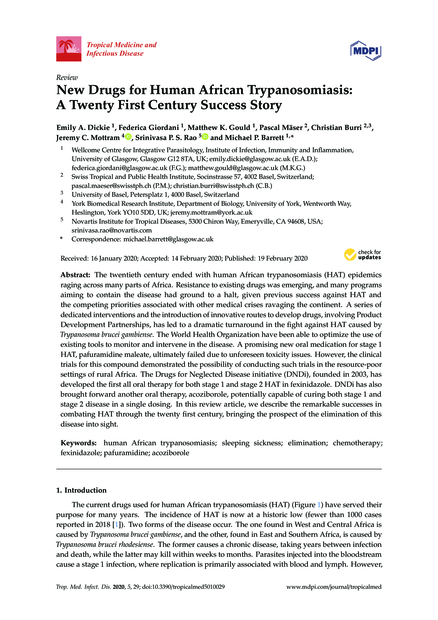New Drugs for Human African Trypanosomiasis: A Twenty First Century Success Story
The twentieth century ended with human African trypanosomiasis (HAT) epidemics raging across many parts of Africa. Resistance to existing drugs was emerging, and many programs aiming to contain the disease had ground to <span class="attribute-to-highlight medbox">a</span> halt, given previous success against HAT and the competing priorities associated with other medical crises ravaging the continent. <span class="attribute-to-highlight medbox">A</span> series of dedicated interventions and the introduction of innovative routes to develop drugs, involving Product Development Partnerships, has led to <span class="attribute-to-highlight medbox">a</span> dramatic turnaround in the fight against HAT caused by Trypanosoma brucei gambiense. The World Health Organization have been able to optimize the use of existing tools to monitor and intervene in the disease. <span class="attribute-to-highlight medbox">A</span> promising new oral medication for stage 1 HAT, pafuramidine maleate, ultimately failed due to unforeseen toxicity issues. However, the clinical trials for this compound demonstrated the possibility of conducting such trials in the resource-poor settings of rural Africa.


